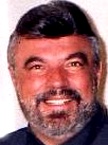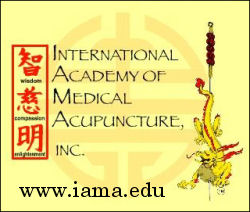Acupuncture & TCM Articles

Acupuncture Articles
by John A. Amaro L.Ac., Dipl.Ac.(NCCAOM), DC
 Dr. Amaro is an internationally known author, lecturer and practitioner beginning his practice of Acupuncture and Chiropractic in 1971. He has led 13 diplomatic Acupuncture study tours of The People's Republic of China escorting more than 500 doctors and practitioners. He has personally studied Acupuncture in nine separate Asian nations. Dr. Amaro is an internationally known author, lecturer and practitioner beginning his practice of Acupuncture and Chiropractic in 1971. He has led 13 diplomatic Acupuncture study tours of The People's Republic of China escorting more than 500 doctors and practitioners. He has personally studied Acupuncture in nine separate Asian nations.
He has received Certification in Acupuncture through the Columbia Institute of Chiropractic in 1973. This was one of the first Acupuncture postgraduate education programs for physicians in North America commencing in 1972.
He has been certified by the Waseda Acupuncture College in Tokyo, Japan in 1974 and graduated from the Chinese Medical Institute, Kowloon, China in 1976. He had previously taken postgraduate studies at the Tai Chung Medical School Taipei, China 1973.
The Most Important Notes of Acupuncture -- Part III
John A. Amaro L.Ac., Dipl.Ac.(NCCAOM), DC
In retrospect, we have been presented with eight meridians in Part I and II of this series and are now ready for four more. If you took my advice in Part II, you are very familiar with the meridians presented and in all liklihood have a few success cases under your belt. If you are typical, there are also a few people you didn't help at all. You probably thought you were the only one. Once we finish this series of articles we will expound on how to minimize your failure cases, but first things first.
Another cardinal rule of acupuncture is "Always stimulate scar tissue wherever you find it." Even if the scar was produced in the sterile environment of a hospital surgical arena, the meridian flow of magnetic energy may be disrupted as a radio broadcast signal would be if a large building or mountain were in the path of the beam. Often times, serious conditions are the result of simple appearing scars which adversely affect the meridian flow. I prefer the teishein (non-invasive) pressure device or he ne laser to stimulate the scar; however, any form will work.
Also remember, the chiropractic adjustment is of paramount importance and is fully utilizing the principles of acupuncture. It makes no difference if the adjustment is given prior to acupoint stimulation or after, as long as it is accomplished.
Study the next four meridians offered here, digest them completely, and begin using them if you have not done so. Remember, "A farmer never plowed a field by turning it over in his mind."
Pericardium, Circulation Sex, Heart Constrictor (pericardium meridian controls blood and sexual hormones)
P3 Along the elbow crease at the medial side of the tendons of the biceps brachii muscle and the brachial artery. Water point on pericardium meridian, excellent for inflammation of elbow.
P5 Three human inches above the wrist crease between the two tendons of palmaris longus muscle and the flexor carpi radialis muscle. Psoriasis, also use cold laser on lesions.
P6 Two human inches above the wrist crease between the two tendons of palmaris longus muscle and the flexor carpi radialis muscle. Five Star Point, master point for abdomen, mental disorder, neurosis.
P7 Middle of the most distal skin crease of the wrist between the two tendons of the palmaris longus muscle and flexor carpi radialis muscle. Source point, hormonal or circulatory problems.
P9 About one-tenth human inch above the corner of the nail bed on the radial side of the middle finger. Pericardium tonification point.
Triple Heater, Triple Warmer (respiration, digestion, genitourinary)
TH 3 Between the 4th and 5th metacarpal bones, about one human inch from the web between the ring finger and the little finger. Use with TH 17, 18, 19, 20, and 21 for ear problems, tinnitus.
TH 4 Middle of the skin crease on the back of the wrist, at the ulnar side of the extensor digitorum communis muscle. Triple heater source point, affects metabolism in general.
TH 5 Two human inches above the skin crease on the back of the wrist, between the ulna and the radius. Master point for upper extremity, use with LI 4 and LI 11.
TH 10 In the depression behind the upper part of the olecranon, when the elbow is slightly flexed. Elbow problems.
TH 17 Behind the lobule of the auricle, in the depression between the mastoid process and the mandible. Deafness, tinnitus, TMJ, upper cervical joint fixations.
TH 18 On the root of the auricle, one-third distance from TH 17 and TH 20.
TH 19 On the root of the auricle, two-thirds the distance from TH 17 and TH 20.
TH 20 On the natural line of the hair, above the apex auriculae.
TH 21 At the front of the tuberculum supratragicum, near the margin of the bone, where a depression is formed when the mouth is opened. Hearing disorders, facial pain, TMJ.
TH 23 At the lateral end of the eyebrow. Eye problems.
GB 1 One-half human inch lateral to the external canthus. Eye problems, use with TH 23, ST 1, BL 1 and BL 2.
Tai Yang -- Just above the zygomatic arch and behind the lateral orbital bone. Lateral headache, eye strain or pain.
GB 2 On the posterior margin of the condyloid process of the mandible, in front of the incisura intertragicia, where a depression is formed when the mouth is wide open. TMJ.
GB 13 On the lateral part of the forehead, along the natural line of the hair, two-thirds the distance, laterally, from midline to the temple. Muscle and tendon problems, also check ST 3, GB 22, and CV 3.
GB 14 One human inch above the middle of the eyebrow, in the depression on the superciliary arch. Frontal or sinus headache, treat with GB 20, LI 20 and SI 19 for headaches.
GB 20 Below the occipital bone, in the depression on the outer part of the trapezius muscle, on a level with the depression below the occipital protuberance. Any neck problem, occipital headache, altered range of motion, torticollis.
GB 22 Three human inches below the axilla, in the 4th intercostal space on the midaxillary line. Muscle and tendon problems.
GB 24 Just below the anterior extremity of the 9th rib. Gall bladder alarm point.
GB 25 On the anteroinferior side of the anterior extremity of the 12th rib. Kidney alarm point.
GB 30 On the posterosuperior side of the greater trochanter, one-third the distance, posteriorly, from the greater trochanter to the sacral hiatus. Use with bladder points for low back pain, primary point for hip disorders.
GB 31 On the lateral part of the thigh, seven human inches above the patella (from the greater trochanter to the knee joint is 19 human inches.) Gives strength to GB 30 for hip problems.
GB 34 On the anteroinferior part of the capitulum of the fibula, two human inches below the knee. Five star point, master point for lower extremity.
GB 40 In the depression on the anteroinferior part of the lateral malleolus. Amaro's hero point, good for many problem cases, gall bladder source point.
GB 43 In the web between the 4th toe and the little toe. Use with HT 3 for mental depression, water point on gall bladder meridian, may help sciatica.
Liver (liver meridian controls muscles and eyes)
LV 2 In the web of the big toe and the second toe. Master point for skeletal muscle spasms, use with LV 3.
LV 3 Over the depression between the first and second metatarsal bones. Skeletal muscle spasms, sight problems.
LV 8 At the medial knee crease, in front of the semimembranosus muscle behind the lower end of the femur. Knee problems.
LV 13 Below the end of the 11th rib where it meets the midaxillary line. Spleen alarm point, use for diabetes or hypoglycemia.
LV 14 In the 6th intercostal space, two ribs below the nipple. Liver alarm point, sore with musculoskeletal problems.
| 